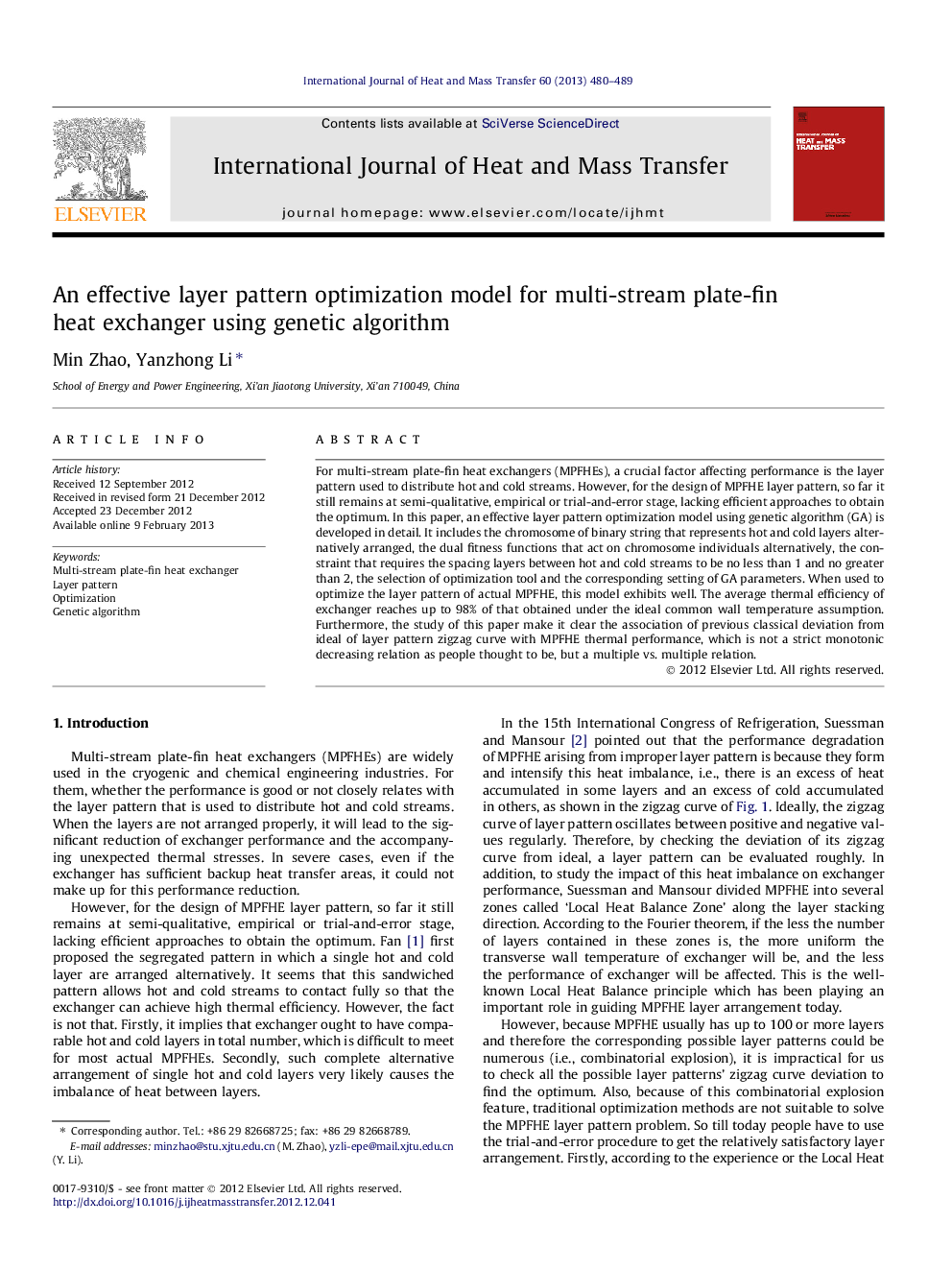| Article ID | Journal | Published Year | Pages | File Type |
|---|---|---|---|---|
| 658320 | International Journal of Heat and Mass Transfer | 2013 | 10 Pages |
For multi-stream plate-fin heat exchangers (MPFHEs), a crucial factor affecting performance is the layer pattern used to distribute hot and cold streams. However, for the design of MPFHE layer pattern, so far it still remains at semi-qualitative, empirical or trial-and-error stage, lacking efficient approaches to obtain the optimum. In this paper, an effective layer pattern optimization model using genetic algorithm (GA) is developed in detail. It includes the chromosome of binary string that represents hot and cold layers alternatively arranged, the dual fitness functions that act on chromosome individuals alternatively, the constraint that requires the spacing layers between hot and cold streams to be no less than 1 and no greater than 2, the selection of optimization tool and the corresponding setting of GA parameters. When used to optimize the layer pattern of actual MPFHE, this model exhibits well. The average thermal efficiency of exchanger reaches up to 98% of that obtained under the ideal common wall temperature assumption. Furthermore, the study of this paper make it clear the association of previous classical deviation from ideal of layer pattern zigzag curve with MPFHE thermal performance, which is not a strict monotonic decreasing relation as people thought to be, but a multiple vs. multiple relation.
